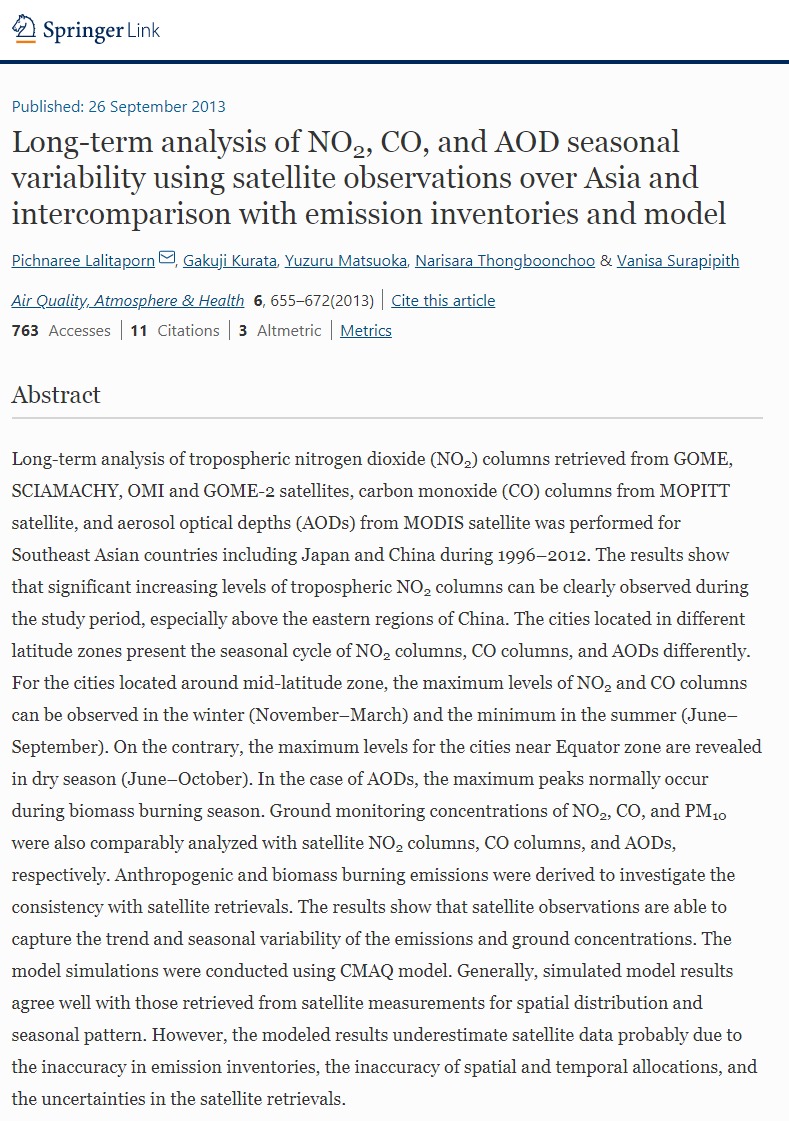
Long-term analysis of tropospheric nitrogen dioxide (NO2) columns retrieved from GOME, SCIAMACHY, OMI and GOME-2 satellites, carbon monoxide (CO) columns from MOPITT satellite, and aerosol optical depths (AODs) from MODIS satellite was performed for Southeast Asian countries including Japan and China during 1996–2012. The results show that significant increasing levels of tropospheric NO2 columns can be clearly observed during the study period, especially above the eastern regions of China. The cities located in different latitude zones present the seasonal cycle of NO2 columns, CO columns, and AODs differently. For the cities located around mid-latitude zone, the maximum levels of NO2 and CO columns can be observed in the winter (November–March) and the minimum in the summer (June–September). On the contrary, the maximum levels for the cities near Equator zone are revealed in dry season (June–October). In the case of AODs, the maximum peaks normally occur during biomass burning season. Ground monitoring concentrations of NO2, CO, and PM10 were also comparably analyzed with satellite NO2 columns, CO columns, and AODs, respectively. Anthropogenic and biomass burning emissions were derived to investigate the consistency with satellite retrievals. The results show that satellite observations are able to capture the trend and seasonal variability of the emissions and ground concentrations. The model simulations were conducted using CMAQ model. Generally, simulated model results agree well with those retrieved from satellite measurements for spatial distribution and seasonal pattern. However, the modeled results underestimate satellite data probably due to the inaccuracy in emission inventories, the inaccuracy of spatial and temporal allocations, and the uncertainties in the satellite retrievals.